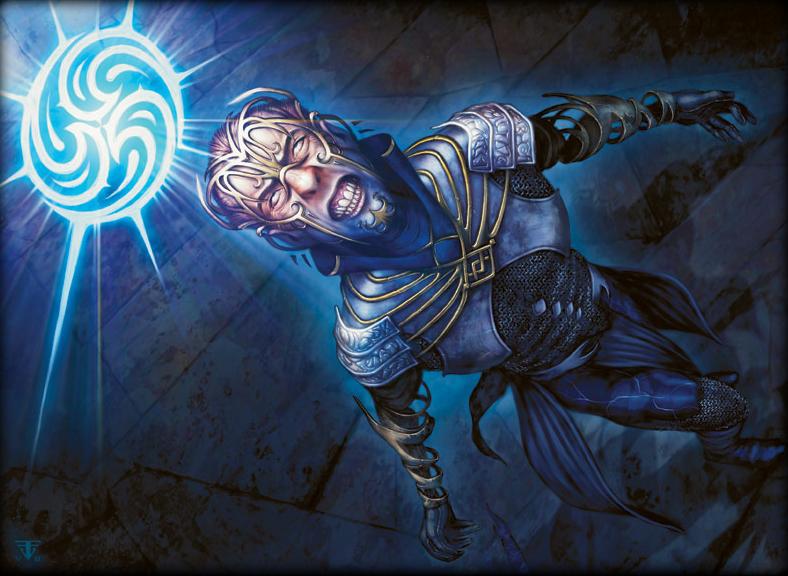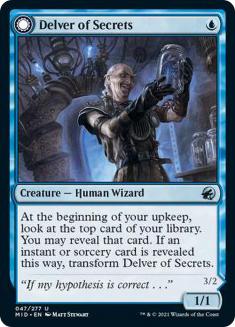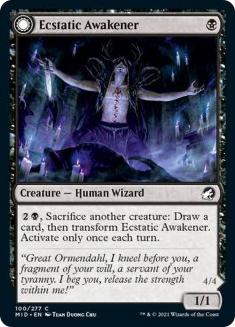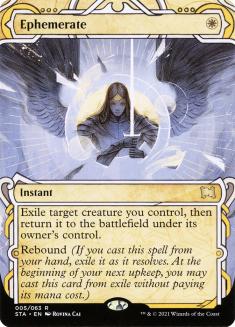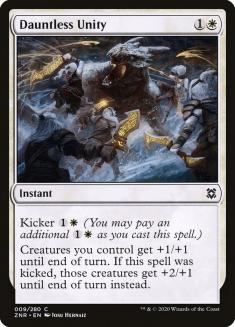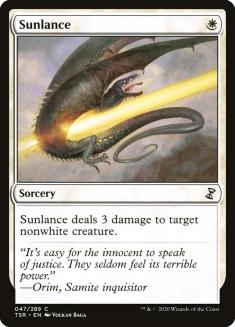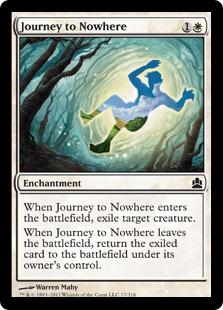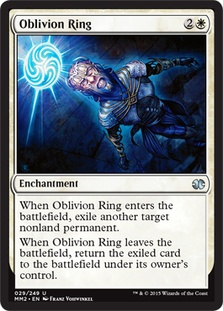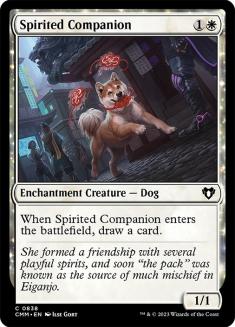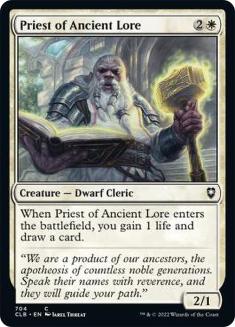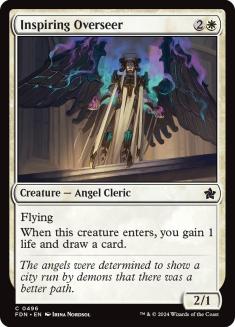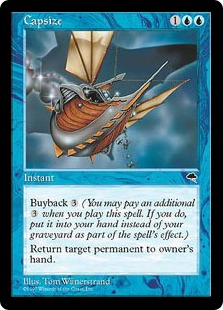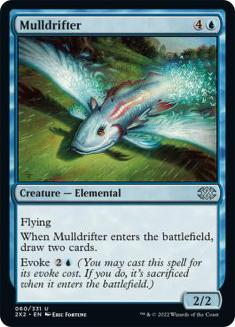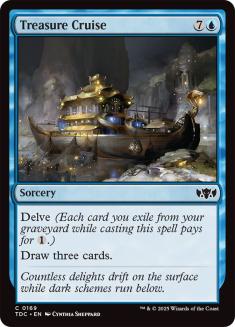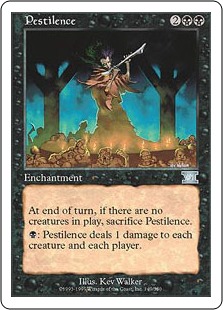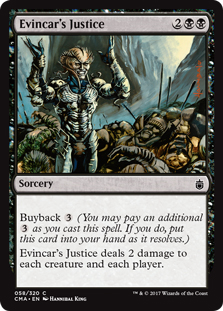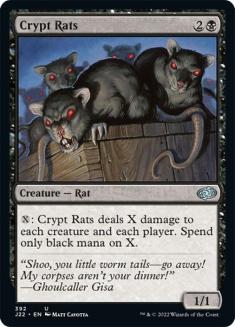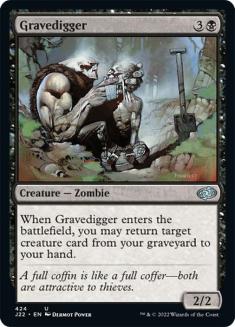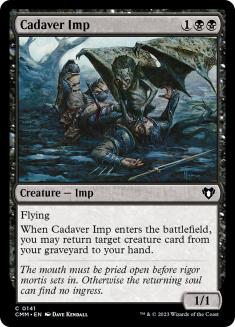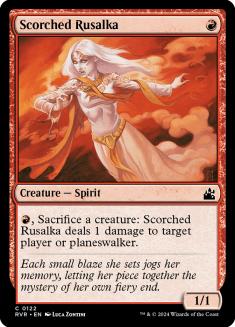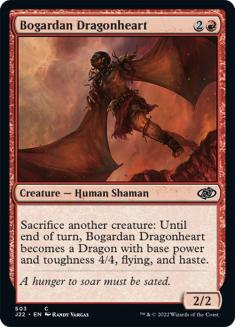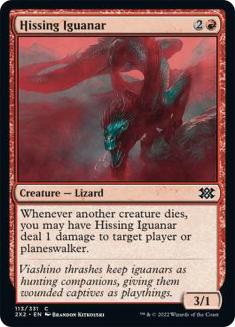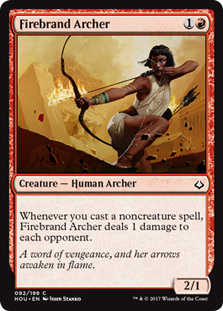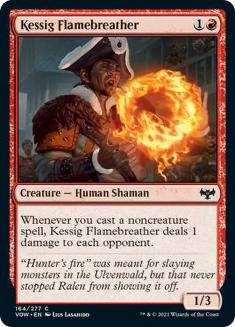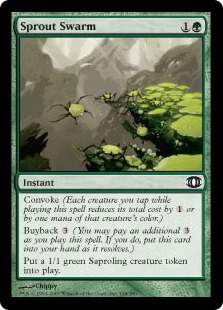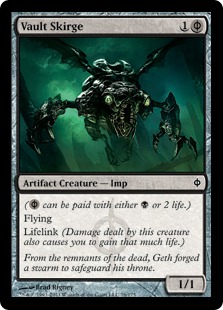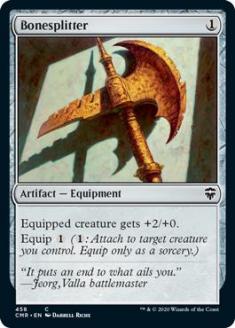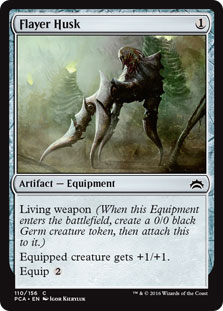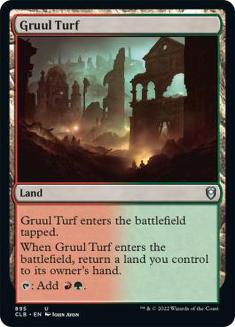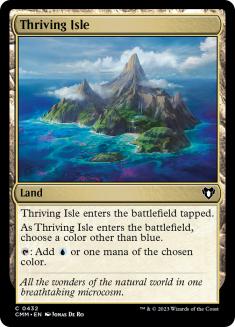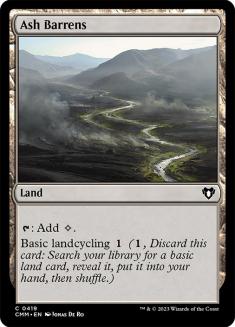Today’s article has been a long time coming. A Pauper Twobert was one of the more obvious directions to take the concept from the jump, but after selling the pieces of the foil Pauper Cube I once maintained, I didn’t have much motivation for that sort of project. I found inspiration that perhaps wasn’t intended and that I wasn’t necessarily looking for in the Rhystic Studies video Dear Gonti, Love Sophie. After shuffling some unsleeved cards, something about an unsleeved Pauper Twobert just felt right. I doubt that I’ll ever own a judge foil Lightning Bolt again, but a stack of unsleeved grody commons is much easier to come by.
You might be wondering, as many do, “What the hell is a Twobert?” Twoberts are 180-card Cubes designed to be drafted by two to four players. For more information on the concept, check out my inaugural Twobert article. I’ve seen other players refer to them as “micro-Cubes,” which maybe has a better sound to it, but it doesn’t make immediately clear that we’re talking about a 180-card design, which Twoberts does because it’s a completely made-up word and thus necessarily refers to exactly one thing. Do I wish I had come up with a better term? Maybe. Do I have any clue what that would be? Not at all.
The Pauper Side
If you’re unfamiliar with Pauper as a format, it means that non-common rarities are not allowed. The first Cube I ever designed was a Pauper Cube, and it was a joyful experience to take what I learned all those years ago and apply it to a Twobert. My philosophy regarding Pauper has always been to include power level outliers and try to raise the rest of the Cube to be competitive. This was difficult in a 360-card environment, and more difficult for even larger designs. I’ve found this to be a great approach for the Pauper Twobert, though. If you don’t like Sprout Swarm, then you might not like my build, but I’ll link you to the list on Cube Cobra and let you decide for yourself.
You’ll note that there are no double-faced cards in the Cube. I’m not about to track down checklist cards for my unsleeved Cube. Delver of Secrets is a mainstay of Pauper Constructed and a solid Pauper Cube card, but it’s a nonstarter for me here. The Ecstatic Awakener that I grabbed for the Cube without thinking has become a bookmark.
This doesn’t change the landscape much, but it’s worth pointing out if you’re interested in a sleeved version of this Cube. There’s a part of me that wants to find a line on a Judge foil Lightning Bolt and get the band back together, but I don’t expect to do that anytime soon. The current build costs essentially nothing by comparison.
Let’s break the Cube down by color and see what’s going on in this environment.
White
White was consistently the weakest color in my 360-card Pauper Cube. Recent sets have given white a lot more punch than it used to have, and the 180-card size also lets white’s best cards shine through by virtue of being surrounded by fewer weaker cards. White has a lot of powerful aggressive cards and midrange creatures with enters-the-battlefield effects in this environment, and is much more of a contender than it ever was for me at larger sizes.
White’s aggressive curve and ability to go wide with token makers can set the rules of engagement for any matchup. Whether your white deck supports Ephemerate or Dauntless Unity, you’ll be able to give your opponent plenty to worry about.
White’s removal options in Pauper are quite a bit weaker than they are in other Cubes, missing on Swords to Plowshares and all that, but they’re important to have access to for the purpose of combatting hateful cards like Fireslinger. Oblivion Ring is fairly below rate in a Cube this low to the ground with few non-creature permanents to answer, but it will be important to have access to some of the time. While typically a much weaker removal spell, Sunlance actually comes at a premium in this environment.
Priest of Ancient Lore was a significant printing for Pauper Cube, and it’s funny to me how quickly we got Inspiring Overseer. It’s odd to look at both of those cards on the Cube list, and Priest of Ancient Lore is high on my list of cards to replace because of this. It will likely go soon if we keep seeing powerful white commons. Spirited Companion is another powerful new tool for white in Pauper, and is at no such risk of being cut.
A lot of white’s power comes in the four-mana slot. Guardian of the Guildpact is basically True-Name Nemesis, Palace Sentinels offers monarch nonsense, and Battle Screech is only a “common” due to the technicality of being in the Magic Online-only set Vintage Masters. If Battle Screech weren’t a staple of Pauper Constructed, I’d be highly tempted to replace the card with an old favorite of mine in Seraph of Dawn, but I did track down a beat-to-hell copy of Battle Screech, which makes its inclusion more palatable to me. The uncommon rarity symbol is an eyesore, but the wear on the card’s edges is beautiful.
Blue
I don’t believe that the absolute most powerful card in this Cube is blue, but blue does get a lot of stuff that is pretty unreasonable to have at common. Capsize, Mulldrifter, Treasure Cruise… these cards can be somewhat overwhelming, but a big part of the draw to Pauper for me is the historically powerful commons that break the mold.
Every color in my build has more creatures than noncreatures, and this helps to push blue decks away from just being a collection of busted spells by forcing many blue decks to take an aggressive role. The Ninja package is certainly powerful, but it does require you to play some one-toughness creatures that don’t generate value and play a bit of a more honest game, albeit one with a high ceiling.
The blue card that I shied away from on power level is Fall from Favor. It’s really brutal to have your opponent’s removal spell to also make them the monarch. See: Palace Jailer. I’m sure that some of the power-level outliers that I have included will be cut from others’ lists, but Fall from Favor specifically has a high floor and unbeatable ceiling at a cost that is too low and too splashable.
Blue’s offerings of card selection, counterspells, and bounce spells make it a very powerful color in this Cube. I’m pretty firm in my card choices for the blue column, though admittedly having Shaper Parasite as the only morph diminishes excitement around the card. It’s an old favorite, though it is likely the first card on the chopping block for blue if I decide to make some changes.
Black
I couldn’t resist including Gray Merchant of Asphodel and offering black devotion as a subtheme, but black also has powerful ways to pair with every color in this environment. Orzhov has powerful drain effects via extort, Dimir Ninjas is a solid tempo deck, Rakdos is a great aggressive pairing, and Golgari midrange pairing Pestilence with cards like Primal Huntbeast offers a backbreaking end-game.
The list is possibly slightly heavy on black sweepers, with Pestilence, Evincar’s Justice, and Crypt Rats all in the spread. Each offers something fairly unique, though cutting one might be desirable to diversify strategies a little more. I left Suffocating Fumes on the chopping block due to requiring much less investment from the caster, but as is, it might be a little too easy for black decks to clear up tokens.
Initially I was interested in Falkenrath Noble and pushing a more active sacrifice theme, but the card is just a little too efficient, and having access to a couple of powerful sacrifice cards makes more sense than really pushing a macro-archetype. Carrion Feeder being a powerful one-drop for any aggressive deck fits into this Cube much more easily than Falkenrath Noble being a kind of dumpy four-drop for a very specific deck.
Black has some very powerful targeted removal as well, though more of the color’s strength comes from Gravedigger effects. If you play a game that involves trading on the battlefield, then looping Gravedigger and Cadaver Imp gives you a lot of value going long.
Red
My fondness for burn spells that can target players likely makes red the best aggressive card in the Cube, though I did include Fiery Cannonade to tip the scales a little in favor of control. Not to mention that Arc Lightning is among the more brutal removal spells available in Pauper Cube. Red is best at dealing damage, but can do so while leaning into caring about noncreature spells, going wide with tokens, or just playing a good old-fashioned attrition game.
While I did eschew Falkenrath Noble, Hissing Iguanar got the nod largely for being more efficient. Scorched Rusalka and Bogardan Dragonheart also offer a lot of punch for aggressive decks that dabble in sacrifice synergies. Makeshift Munitions is a card that you’ll often see in Pauper Cubes, but it’s one that I’m not a fan of. It seems that the card will generally either be too inefficient for requiring mana to activate, or that the effect will be so relevant that nothing else in the game matters. It is unlikely to lead to satisfying games, so I’m not a fan.
Beetleback Chief is red’s Battle Screech, in that it’s a card that is legal in Pauper Constructed but one that was never physically printed at common. It’s quite powerful and synergizes with quite a lot of what’s going on in the Cube, but I’ll admit that the uncommon set symbol pains me. Would it be too much to ask to see a Commander deck that prints some Vintage Masters cards with a common symbol?
My favorite part of the red column is the spread of two-mana creatures. The trifecta of Firebrand Archer, Kessig Flamebreather, and Thermo-Alchemist are all solid standalone cards that scale incredibly well together. My original Pauper Cube offered Grapeshot and Empty the Warrens as aspirational combo-y cards, and this package is subtly evocative of that.
Green
Green, like blue, is far more aggressive in this Cube than usual. I have found mana acceleration to be fairly middling in Pauper Cubes given that there are tons of ways to generate value with only so many effects that are powerful enough on their own to break games open. Ramping into Sarulf’s Packmate just does a lot less for you than ramping into Garruk’s Wildspeaker. I do still keep Llanowar Elves around, though more of the appeal is in bloodthirsting Scab-Clan Mauler than you might think.
Green is long on creatures that draw cards or tutor for lands, in addition to offering a few powerful token makers to go wide. This is where we see the most powerful card in the Cube in Sprout Swarm. It’s been a long time since Sprout Swarm was first printed, and the thing to know if it’s not obvious is that you can use the convoke ability to pay the buyback cost, which makes the card get out of control very quickly. It’s a bit much for many players’ Pauper Cube preferences, but as somebody who loved Booster Draft when Sprout Swarm was first printed at common, I can’t bring myself to cut the card.
Another of green’s strengths comes in the form of a small selection of hexproof creatures. Primal Huntbeast and the token off Jungleborn Pioneer offer safe places to stick your Armadillo Cloak. This plan isn’t super-efficient, but it’s much more desirable to have around than a very pushed version of the hexproof deck. Gladecover Scout and Slippery Bogle with more Auras in the spread just lead to pretty boring drafts and unengaging gameplay. If you really wanted to push green, this is a route you can take, though I’ve found the volume of good value creatures satisfactory to this end.
Gold
Most of the gold section of this Cube is just solid rates, with nothing terribly pushed. Dinrova Horror and Traven Preparations represent some of the more powerful options from their respective Booster Draft environments, though for the most part there’s not a huge incentive to take any of the gold cards in this Cube super-highly.
I biased towards fewer gold cards and more mono-colored cards because of this dynamic, and also because Simic falls off very quickly. I suppose Growth Spiral plus bouncelands is a powerful interaction, but with common mana-fixing lands entering the battlefield tapped, I wanted to try to incentivize players to play decks that were closer to two colors on average than three. Featuring fewer gold cards helps on that front.
Artifacts
There aren’t a ton of powerful colorless options at common, though Pilgrim’s Eye is a personal favorite that didn’t quite make the cut. In a small Cube, there’s just less value in offering green’s strengths through colorless cards. The few artifacts that I did feature mostly contribute to giving beatdown decks some additional efficient options.
The one exception is Pristine Talisman. The “combo” with Evincar’s Justice remains a feature of Pauper Constructed today. Despite being very powerful when it works, it can be rocky to set up with all the reach in the Cube. I like having this setup around, though I’ll admit that it’s not for everyone.
Lands
The lands that I’ve selected for this Cube are easily the most powerful lands available at common. Bouncelands functionally draw a card, and thriving lands are more powerful individual cards than Guildgates or Terramorphic Expanse. I also included Ash Barrens for offering the utility of being an untapped land when your mana is otherwise good.
Even though there aren’t many lands in the Cube, there are enough to play four or five colors now and again, especially if you can get your hands on Sylvan Ranger and some other green mana-fixing. I’m somewhat tempted to scale back some of the power in the land column, but given that the Cube compromises on power in very few other places, I’m not in a rush to change anything.
Whether you’re interested in a foiled-out Pauper Cube, an unsleeved one, or somewhere in-between, this list is a blast and a great starting point. My first Cube was a Pauper Cube largely based on the budget I had available to build one at the time, and it would bring me tremendous joy if this list inspired others to build their first Cubes. In all of Magic, it’s hard to find a better bang for your buck.

